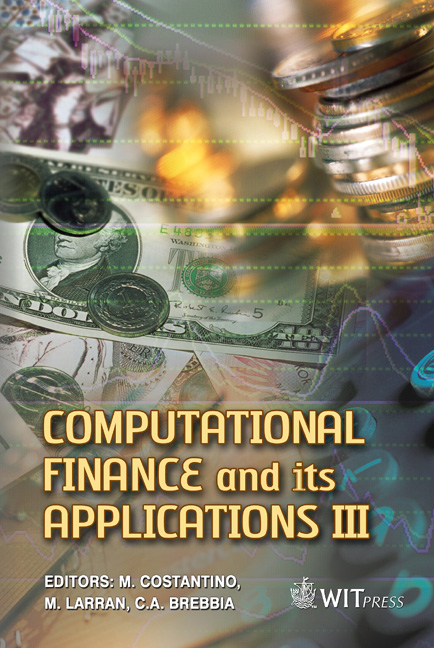Conditional Value-at-Risk Under Ellipsoidal Uncertainties
Price
Free (open access)
Volume
41
Pages
10
Page Range
217 - 226
Published
2008
Size
321 kb
Paper DOI
10.2495/CF080211
Copyright
WIT Press
Author(s)
M. H. Wong
Abstract
Although Value-at-Risk (VaR) has been widely adapted in financial management, Conditional Value-at-risk (CVaR), which is also known as mean excess loss, mean shortfall, or tail VaR, has also gained importance over the past decade. This is largely owing to the more appealing mathematical properties of the latter. Based on Rockafellar and Uryasev’s idea, we are going to look into the CVaR under an ellipsoidal distribution. With the ad-hoc primal-dual interior-point algorithm, we will also focus on the technique that minimizes the CVaR under the framework of portfolio selection. Keywords: Conditional Value-at-Risk (CVaR), Value-at-Risk (VaR), interior point algorithm, ellipsoidal uncertainties, clustered scenarios, Risk Management, portfolio management. 1 Introduction Risk Management plays an important role in assets allocation. It entails the exercise of control over some statistical characteristics of the uncertain portfolio return. Conditional Value-at-risk (CVaR), which is also known as mean excess loss or tail VaR, has gained importance in this aspect over the past decade. This is largely owing to the more appealing mathematical properties compared to the VaR. Based on Rockafellar and Uryasev’s [1, 2] idea, we are going to look into the CVaR under the ellipsoidal uncertainties. A portfolio selection problem, using CVaR as the objective, will be discussed in the framework of stochastic optimization. To model the ellipsoidal uncertainties, we will propose a \“Clustered Tree”, which is deviated from the traditional scenario tree [3, 4, 5] in the sense that each discretization in the latter is now represented by an ellipsoidal cluster.We will also work out
Keywords
Conditional Value-at-Risk (CVaR), Value-at-Risk (VaR), interior point algorithm, ellipsoidal uncertainties, clustered scenarios, Risk Management, portfolio management.





